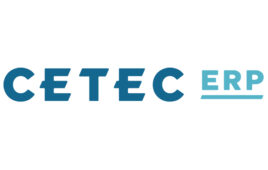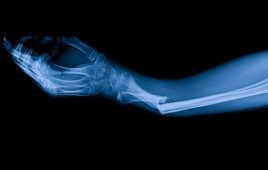
[Image from Unsplash]
For example, she said, “an alert from a patient’s insulin pump, heart monitor or fall detector can be quickly relayed to a physician or member of the family.”
Good recently presented a podcast on Cloud-connected Medical Device Development Challenges and Solutions.
She said capabilities of cloud-connected devices allow medical technology manufacturers to offer data to clients, even if the client has no computing hardware. But capability also brings complexity. There are significant design challenges and a steep learning curve.
Companies developing systems need to understand the common errors in cloud-connected medtech to avoid, as well as the best practices and careful planning required for success. Here are 5 to especially watch out for:
1. You don’t protect your data during transport and rest.
Any time data is on a public channel it is at risk. These channels can include the air between a device and smartphone, on a wire between servers, and even moving locations within a mobile device. Encryption is necessary to preserve privacy and security. Unencrypted data is an invitation to a man-in-the-middle attack. Medical device data is especially sensitive to this mode. Data stored on cloud servers must also be encrypted (and de-identified as necessary) to guard against hacking.
2. You don’t provide scalability and load balancing.
Scalability for your cloud implementation must be provided in many dimensions since stress on the system can originate from many different sources. Robust scaling and load balancing will keep your system at performance levels.
3. You haven’t designed for failure.
Failover, rollback and recovery systems don’t happen without pre-planning and pre-implementation. This is where your DevOps team will shine, but they will need automated systems to do their best work.
4. You don’t make deployment strategies part of the design.
If it’s important to be able to fix your bugs (and you know it is), then create a modular design that can be upgraded without taking your system down. Otherwise, you’ll have to deal with the problem that plagued a large online retailer in the early 2000s—they were losing a little money on each transaction from a bug in their system, but couldn’t upgrade the system—so the bug became a cost of doing business.
5. You don’t know your cloud services provider and your service level agreement.
Your project team will determine project success. Make sure your cloud services provider is the right one for your project, and that you form a partnership with them to the extent possible. The service level agreement will help you determine the best choice for your CSP because it will lay out in detail what is and is not covered by the provider.
[Want to stay more on top of MDO content? Subscribe to our weekly e-newsletter.]





Prior technology would allow a personal medical device to make cellular phone calls to send data. This method is much more secure than an open cloud system with lots of unknowns, which needs multiple precautions including encryption to even attempt security. The primary benefit of the cloud connection will be in the profit to the providers of that connection service. Consider that cell phone connectivity is available in many more areas than internet connections are available and suddenly we have a question without a satisfactory answer. Of course “cloud” is new and the latest fad, but it may not be suitable if the connections must be reliable and secure.
William K. Thanks so much for your comment. Security is an ongoing challenge, for sure, as is reliable access. We are also considering that cloud storage data are going to skyrocket beyond terabytes exponentially–into the zettabytes region. The cloud systems in place now, especially in HealthIT, cannot handle the mega-storage needs that are being predicted.
Agreed that the connection between the device and the cloud is the most problematic. Cellular IoT, particularly LTE Cat M1, will provide ipv6 levels of security. We will need the scalability of the cloud with the security and flexibility of Cat M1.